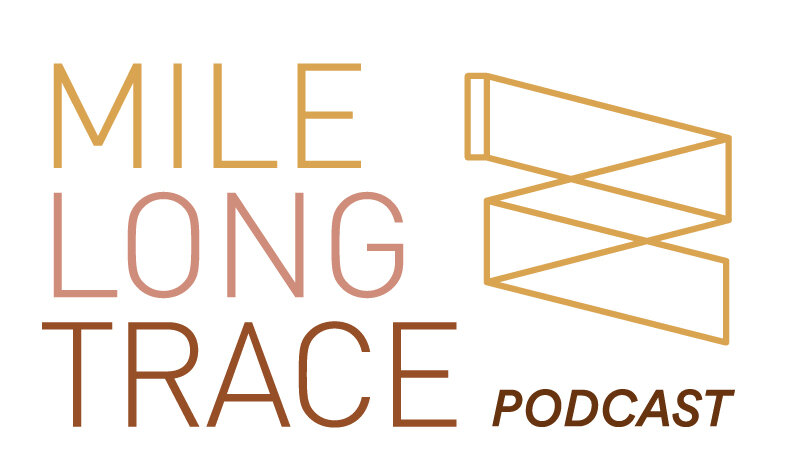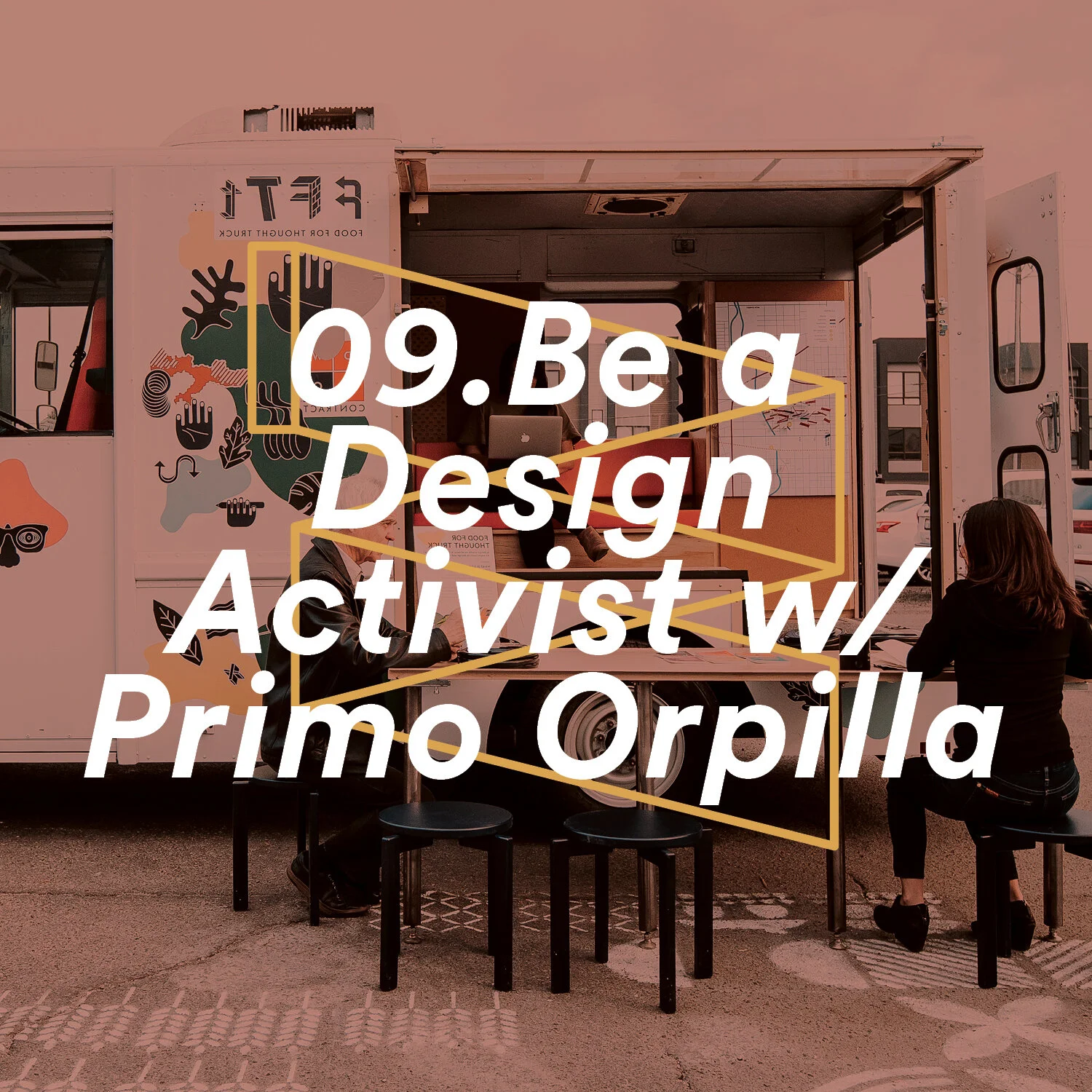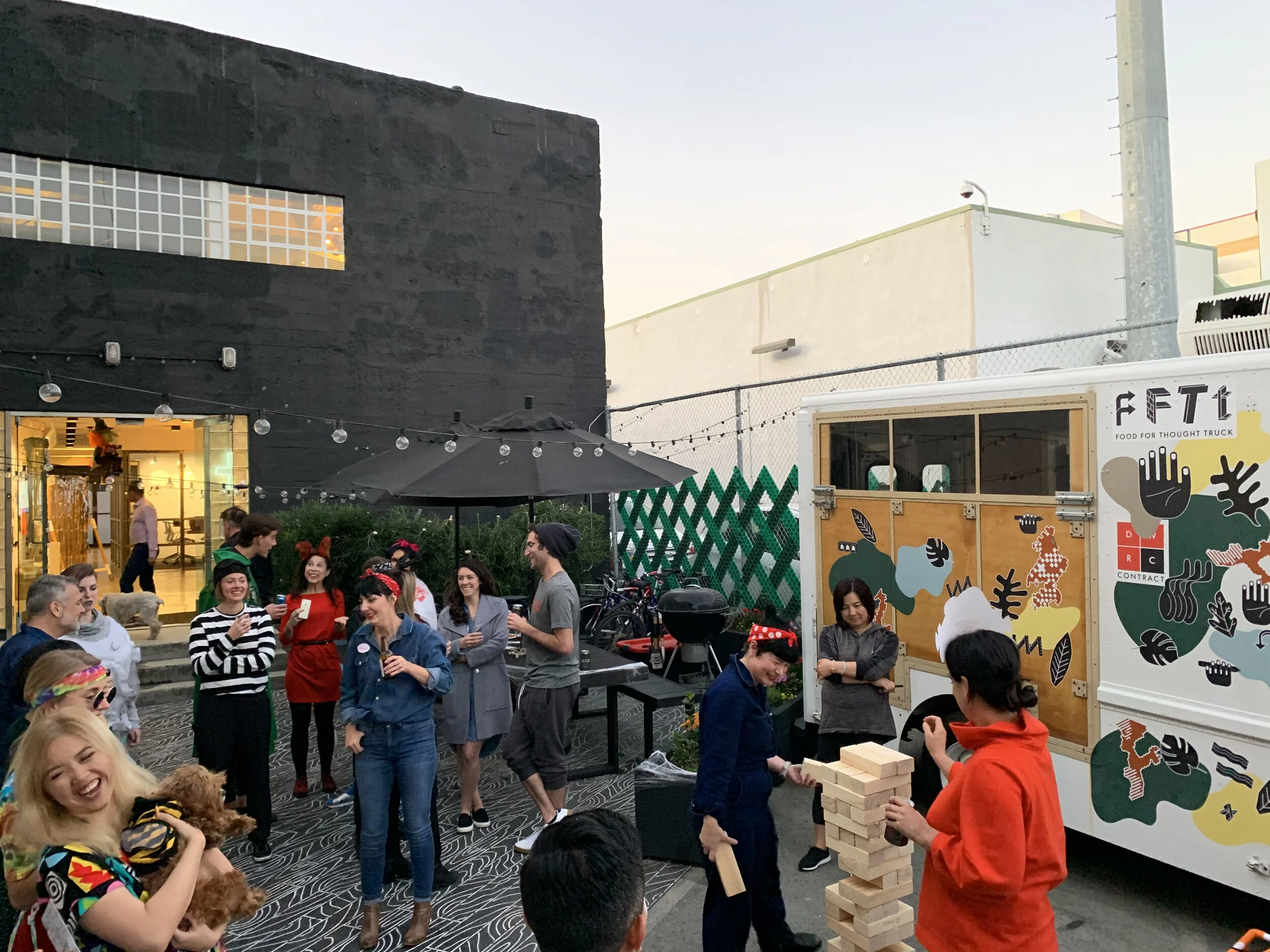09 - Be a Design Activist with Primo Orpilla at Studio O+A
“I want designers to feel empowered to make the request to push and create great environments because humanity is at stake.” - Primo Orpilla
Overview
Now is more important then ever to be a design activist. In this episode we explore corporate workplace design and how it has transcended business structures. We discussed:
Design resiliency
Designing experiences
Change management strategies
How interior design touches lives
Empowering designers to be design activists
Guest Summary
Primo Orpilla is co-founder with Verda Alexander at Studio O+A. Studio O + A is a interior design studio in San Francisco, best known for designing stylish offices for tech clients such as Cisco, Uber, Alibaba, Yelp, Capital One Labs, Nike, Levis, Adidas and McDonald's.
Some highlights from Primo’s career include:
Growing a firm along with his partner to 40 plus employees by becoming an icon in corporate office design.
Studio O+A was awarded Interior top 50 honors as a firm that is doing eye catching, game changing work.
Fast Company named O+A in the top 10 firm as part of the “most innovative companies.”
Cooper Hewitt National Design Award Winner, inducted into Interior Design Magazine Hall of Fame, is Contract Magazine Designer of the Year and ASID Designer of Distinction Award winner.
Published Twelve True Tales of Workplace Design.
Founded a product design line working for Kimball Office, IdeaPaint OFS, and Martin Brattrud to create a furniture line called the Canopy.
He is a FIIDA and has served on the national IIDA board promoting design education.
He is currently teaching in the Master Program at IE University in Madrid and has taught Senior Advance studios at University of Texas.
He is dedicated to advancing commercial interior design through not only design excellence but giving back to universities and professional organizations.
Show Notes
Primo Orpilla, Partner Studio O+A
Question #1: What was your path from school to practice?
Primo: I went to school at San Jose State University. It was during the recession, so we did not have a lot of internship opportunities. I was hoping to get an internship in San Francisco at a big-name firm but ended up going to a very small practice in the Silicon Valley. At that time, the Silicon Valley was not as cool as it is now. There were a lot of companies that made hardware, phone routers and things of that sort. This was the early Silicon Valley days before the dot com boom. When you think of design, especially when you come out of design school, you're hoping to work on big projects. I actually got thrown into a facilities role doing test fits. It was very uninspiring work but it led me to believe there could be something better in workplace design.
Elizabeth: One thing early on that you mentioned was the recession. Everyone I have interviewed has mentioned an aspect of a recession in their career and how that has shaped them. For emerging interior designers, it is important to have perseverance and know that if you are committed to the field it might look a little bit different at times. Those first few jobs can lead you to something amazing. It sounds like the facilities work led you (Primo) to creating the backbone of Studio O+A.
Primo: When you need to be resourceful you have to find little things to make your work enjoyable. Historically workplace design was about high density with a few conference rooms to “brainstorm” in. The organizational culture of an office was hierarchical. What we now see in workplace is teams wanting employees to contribute. From a very high level we began to understand that the end users in a particular space had a certain way of working. From this we were able to create a workplace language.
Question #2: Can you speak to Studio O+A’s design experience ethos?
Primo: The experience of a space is what either makes it successful or not successful. Like when you go to your favorite place. You know the space will function a curtain way and create a certain experience for you. We like to relate the everyday experiences to the workplace environment. We work to create a ritual that is baked into the design. This type of space stays with a person and leaves an experience.
Facebook Office
Question #3: Can you describe the experience of working with Facebook and was there some discomfort in that process?
Primo: I think in a particular case such as with Facebook, it is about the collective and is not always the case that we get to allow everybody to chime in. It was very important to them to utilize their app for team input. It felt like they were apart of the design process. That was a unique situation to let the teams do a thumbs up thumbs down vote on the design. It made us feel vulnerable when we exposed the process to that much scrutiny. Some clients are cautious about that much employee empowerment. But we found that you have to socialize a design idea. It is a very sophisticated change management method when people are involved in the process.
Elizabeth: As we talk about change management I am reminded of the chapter from Twelve True Tales of Design, The Ghost of Lost Invaders where you wrote,
“It' is one of the bitter truths of interior design that a project never looks better than it did the day before the client moves in. It’s a “bitter” truth because for a designer every design eventually becomes co-opted by the user…..O+A designers once returned months later to a space they had created for a client and found the employees using an expensive Eames chair as a backdrop for their dart board. The art of design sees these improvisations as outrages, but the craft of design recognizes that this is what the profession is about. A workspace is a living environment and the ways in which its occupants make it home are the final measure of its success.” (Twelve True Tales of Design).
It is so important to get buy in from all the employees, so they understand the space. This helps alleviate the designer shock when a random coat rack gets dragged in because you have not designed for those spaces.
Primo: Exactly, it is important to think about when design stops and ownership starts. Users need to be able to live in it and allow the space to patina with their own stuff. It can be disastrous if the space is too clinical, if the teams are not allowed to partake and be part of the design. To some customers we say, you should allow this to be co-opted by the group that is going in here, let them live in it because it is their clubhouse. Then it becomes their space and they create the experiences instead of feeling like a space they rent from the company. The design cannot be so precious that you can not kick off your shoes or tag it with something. Now there are some problems when you allow such empowerment. You can not allow complete takeover but we try to design for those spaces.
Elizabeth: A grand lobby is probably not the place in most cases but if one sets the stage with the front of house and back of house and really considers the sequencing of those spaces to provide the user a forum so employees don’t go rouge.
Primo: If you have customers flying in from all over the world you need to have distinct spaces with more formal settings but in the engineering area, where the guys are spending long hours let it get the lived-in look. They want it to feel comfortable. The idea of Risimercial came about because one spends so much time at their workplace. There is a lot to be said for studying the college culture and translating that to work environments. Employees want something that is familiar. If one is used to working long hours in school, they want to be able to take that vernacular from a college campus and experience that in the workplace. In a sense the office environment is a home away from home.
Studio O+A Team
Question #4: Is Risimercial a term your firm recognizes?
Primo: I do not necessarily recognize (or use it actively in our work) but I have heard it as a trendy word. I think it indicates a certain type of feeling. In some sense you want to have a certain type of casual conversation, one that you would want to have in a home environment. The tone of a space very much effects the user’s mood. To me it is more about something that is familiar.
Question #5: How does this thinking transcend to different types of workplace environments?
Primo: It is not just present in tech companies any more. We have a new generation of workers wanting to contribute, whether it is a law or accounting firm. Workplace is collaborative in nature. Employees are aware of what a company is saying about their worth through the spaces that are provided for them.
Question #6: What other trends are you seeing in workplace design?
Primo: Well-being with areas of respite to practice meditation and break away from the rhythm and stress of the day. Rooms that allow for decompression and allow ones brain to reset. In the kitchens we are seeing more healthier options going in. We focus on moving people through the offices. We strategically place micro kitchens to encourage movement throughout the day. The company’s brand, down to the materials are integrated into the built environment.
Twelve True Tales of Workplace Design
Question #7: Where can people find Twelve True Takes of Workplace Design?
Primo: You can find it on Amazon and the FRAME who was our publishers from the Netherlands. FRAME Magazine is one of our favorite magazines for modern workplace.
Question #8: Are there any more books on the horizon for you guys?
Primo: Twelve True Tales of Workplace Design was not meant to be a monograph but depicting a couple projects and the stories. We have a book out right now about design activism called The Food for Thought Truck. We took an old food truck and designed it to be a mobile design thinking lab. It goes out into our communities to help vendors design better spaces such as kiosks for small flea markets or developing plans for a public community center. We are design thinkers and wanted to translate that to our local community so we put design thinking on wheels.
Food for Thought Truck
Question #9: Can you tell us more about the Designer X Activists session you participated in?
Primo: It was a conversation through Metropolis Magazine where our goal was to stand up and be heard. Verda Alexander, my partner spearheaded the event. We discussed and proposed radical ideas to enrich our environment. Not everyone realizes this but we have the ability to change lives and humanity through design. We are stewards for the environment through the products we specify. We control a lot of work that effects our environment and our communities so great spaces should be community facing. They should avoid being these ivory towers but instead be accessible to the community at large.
Elizabeth: Our roles as commercial interior designers’ interfaces with the public, though we are not the ones that live in the spaces daily we enable moments to happen in those spaces and we influence how people use them. A lot of what we do is educate clients on the design process and material choices that impact the environment. The Designer X Activist conversation you had is a great reminder for all of us that we are activist in our role as commercial interior designers.
Closing: What advice do you have for emerging interior designers?
Primo: We are at an interesting intersection in the interior’s world. We now understand how important spaces are to people’s daily lives. Interior is front and center in how we touch people. I want designers to feel empowered to make the request to push and create great environments because humanity is at stake. In workplace design we are miles ahead of other countries. Simply because our workplace chose to flatten organizations and empower a whole generation of youth. Humanity can be learned from workplace and the next generation of designers is in control of it. The advancements being made in workplace to create overall well-being, social and community buildings is really something that can be pushed. I want the next generation to continue to grow this.
Elizabeth: I think your point about humanity is at stake is import to touch on. We are seeing the effects of technology coming on board and how it affects our ability to connect. Even though we are connected we feel disconnected at times so creating environments that allow people to really connect is so important. I love that you are empowering the next generation of designers to push those boundaries and thinking about how they are inserting themselves with humanitarian aspects through workplace.
Credit
Branding & Graphic Design work by Andrea Schwoebel https://www.andreaschwoebel.com/
Content provided by Studio O+A
Facebook imagery by Cesar Rubio
Food for Thought Truck by Elexa Henderson (last image in post)






